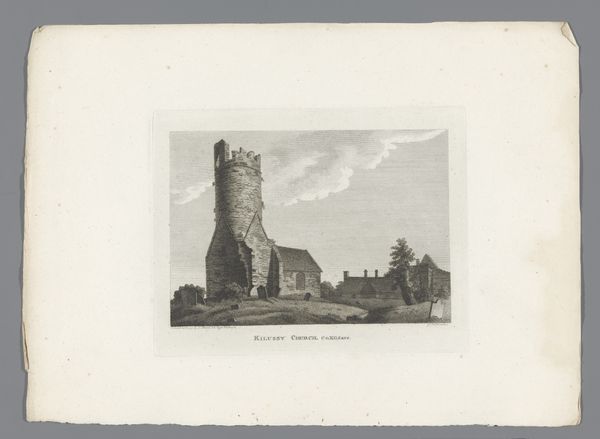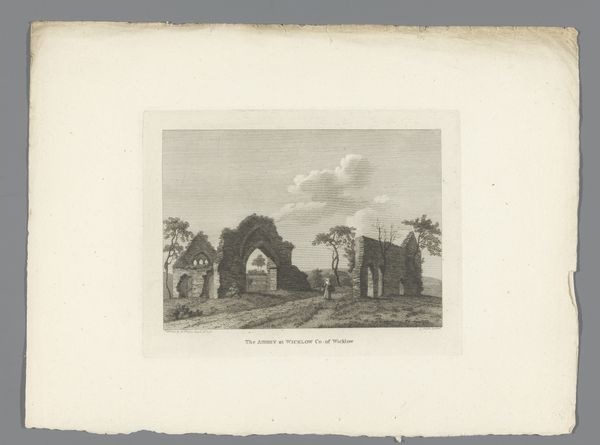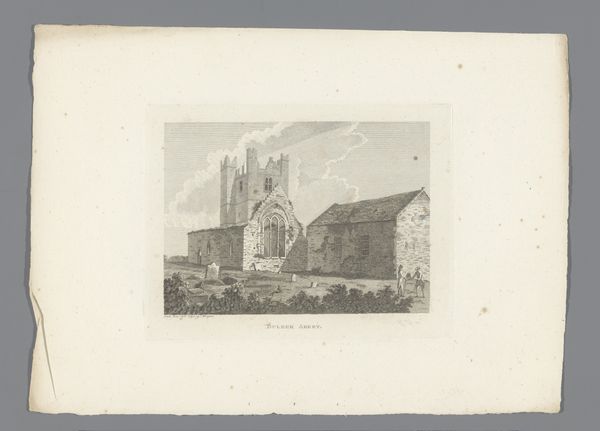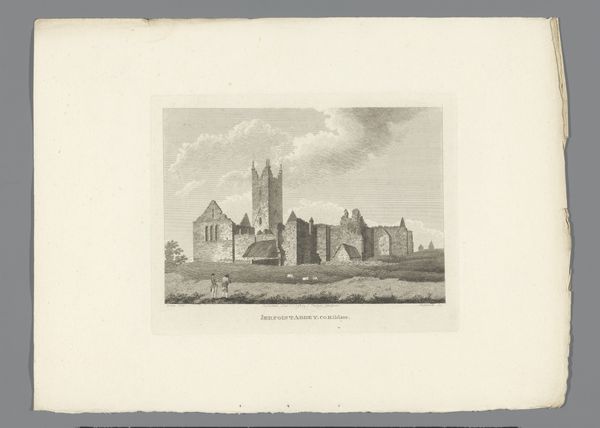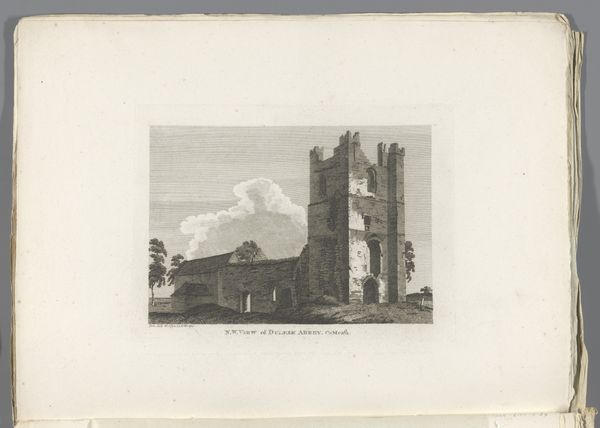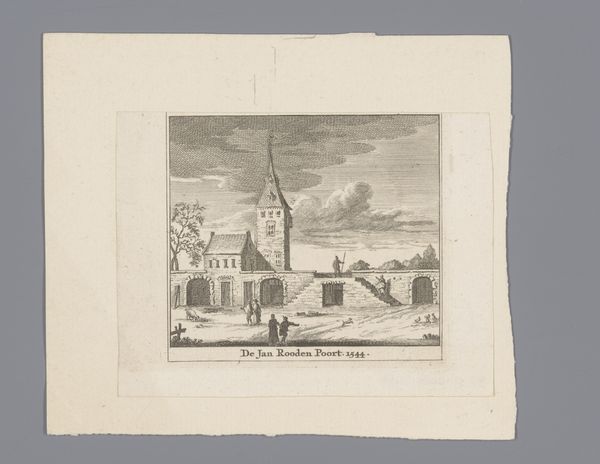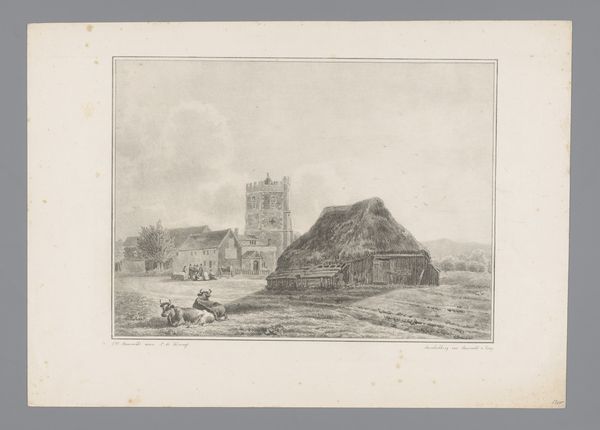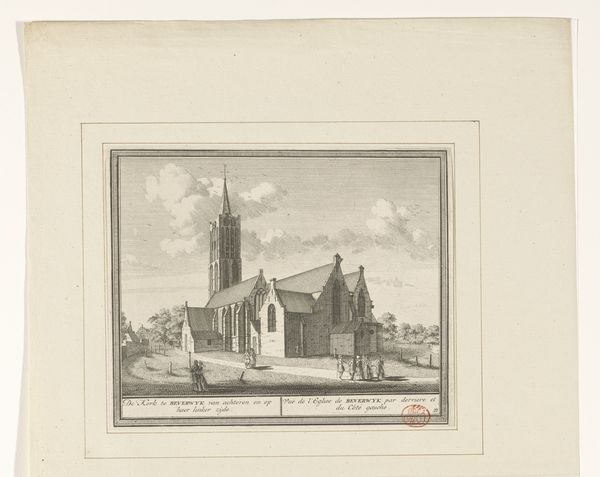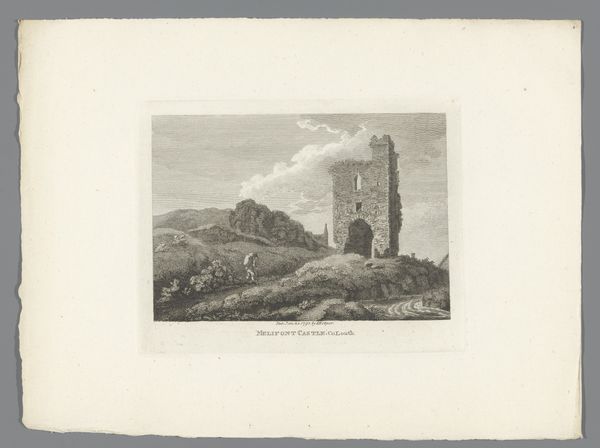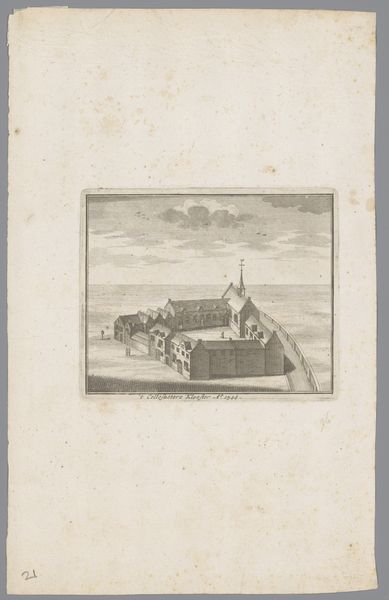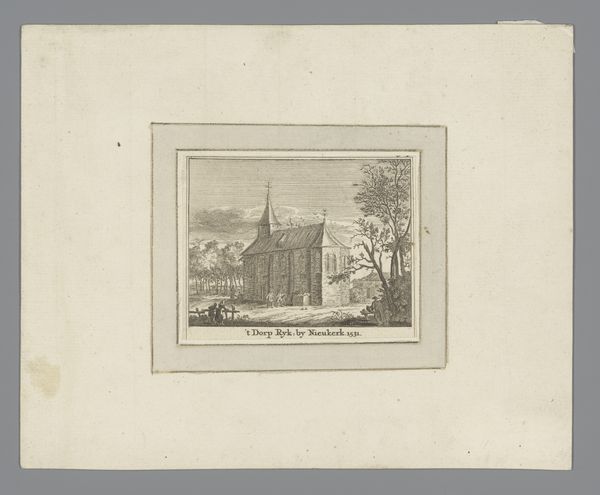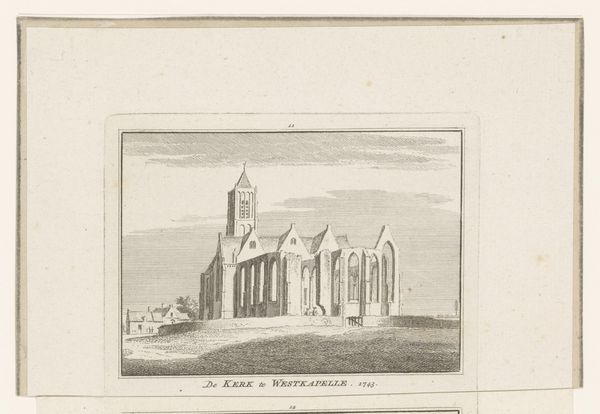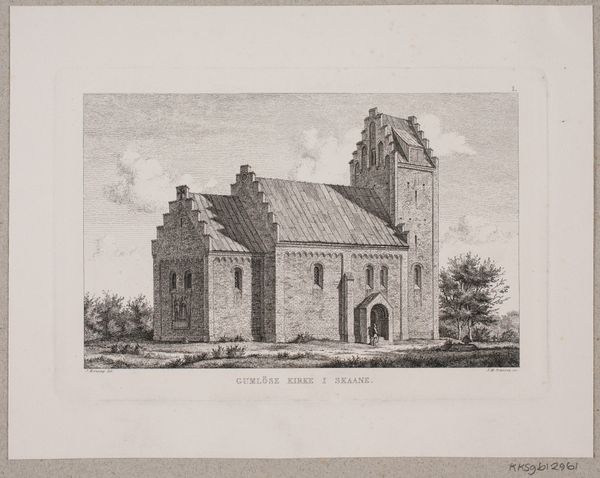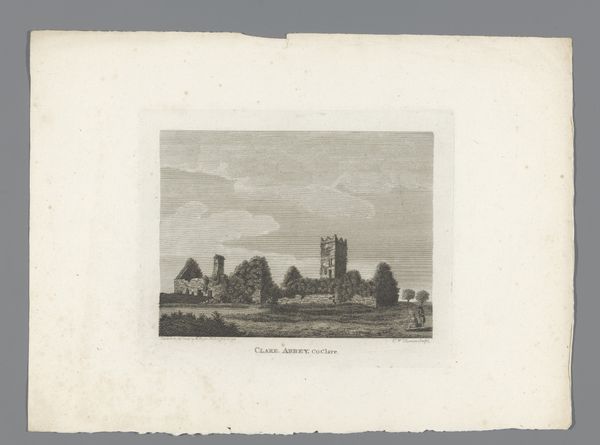
print, engraving
#
neoclassicism
# print
#
landscape
#
15_18th-century
#
engraving
Dimensions: height 155 mm, width 200 mm
Copyright: Rijks Museum: Open Domain
Curator: Here we have "Gezicht op de ruïnes van de abdij van Clonshanvill", or "View of the Ruins of Clonshanvill Abbey" by Thomas Medland. It's an engraving, probably dating from the 1790s. What do you make of it? Editor: Hauntingly serene, isn't it? All those pale grays… It’s less a depiction of ruins and more a study of memory. Ruins themselves are interesting; a lot of power gone fallow… The enduring human compulsion to build, decay, repeat. Curator: Exactly! That's precisely what this genre of landscape aimed to evoke. Notice how the ruined abbey dominates the horizon, yet there's this rather still, almost indifferent sky above it. There is a certain romanticism to it, a touch of sublime decay, which became rather fashionable at the time. Editor: The figures, minuscule as they are, feel… staged. Almost like theatrical extras placed there to reinforce the scale of ruin, not really mourners of the decay of a culture, a symbolic passing. More likely simply travelers admiring scenery. Curator: It's fascinating that you perceive them as extras! I suppose there’s a detachment in the rendering. The landscape as backdrop rather than lived experience. Think, in that era of Neoclassicism, these crumbling forms served as gentle reminders of mortality. The symbolism of decay as a spur towards some form of moral, aesthetic revival, something the enlightenment loved. Editor: Absolutely. Every broken arch whispers the ephemeral nature of human achievement, how temporal power turns into the sands. Visually speaking, it anticipates Romanticism by presenting an anti-heroic image, yet it remains cool, intellectual in tone. The symbols feel very conscious, not raw emotions bleeding on the surface. Curator: A very astute observation! And the fact that it's an engraving adds another layer, doesn't it? It's mass-produced, meaning this vision of melancholic reflection could be shared widely, across society. Something about making an emotion, like melancholia, so accessible… quite intriguing. Editor: So, it isn't a monument as much as a mirror, reflecting not some long forgotten time, but one’s contemporary longing. The perfect memento mori for the burgeoning middle classes. Not bad for something printed, really. Curator: Indeed! Perhaps Medland intended to remind his viewers of something lasting amidst transience. I come away with that notion of memory and what humans choose to memorialize, consciously or not.
Comments
No comments
Be the first to comment and join the conversation on the ultimate creative platform.
